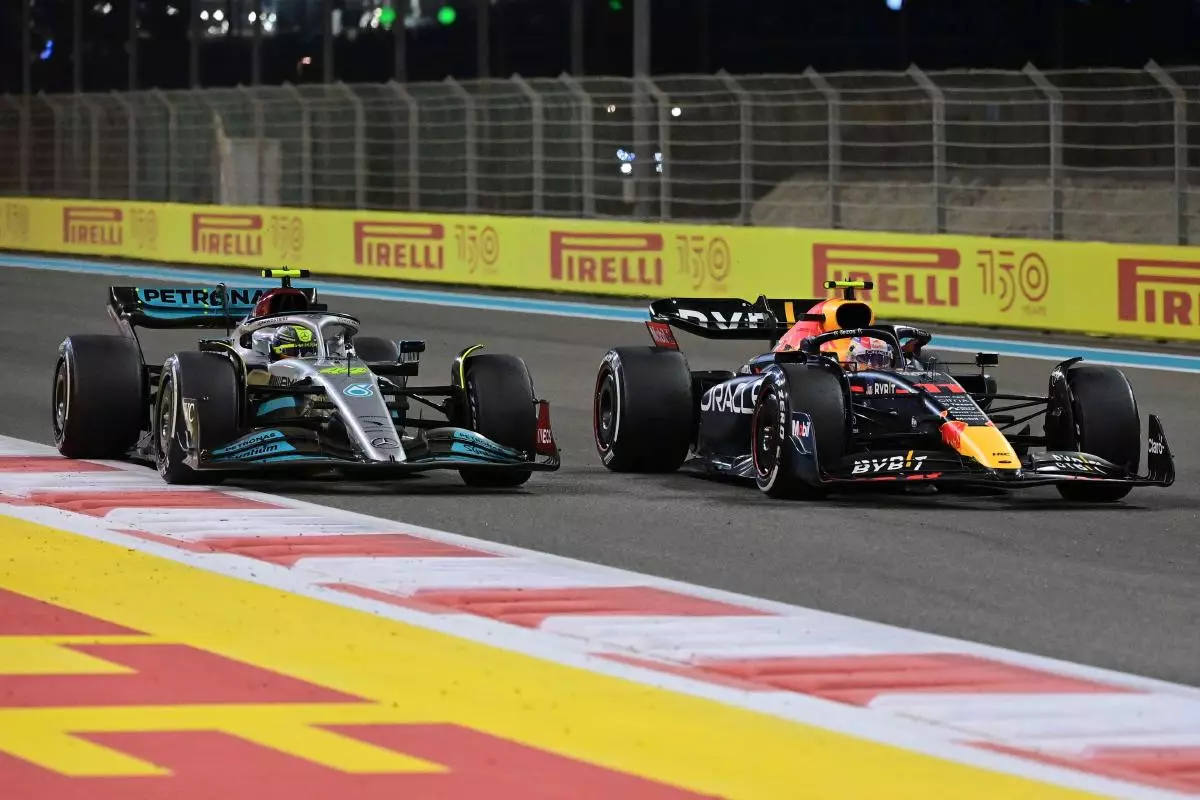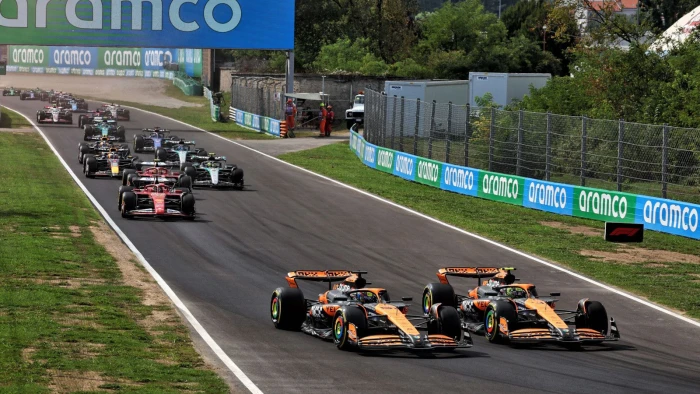Red Bull's chief engineer expects F1 teams to have unique design solutions in 2023

Lewis Hamilton's Mercedes and Sergio Perez's Red Bull
Formula One's rules may be maturing but Red Bull's chief engineer, Paul Monaghan, doesn't expect all the cars to look the same in 2023.
With the ground-effect rules coming into their second year after being introduced for 2022, the winter off-season allows the teams to rectify any weaknesses identified with the design concepts of their cars.
With Red Bull having stolen a march on the rest of the field with a dominant design for 2022, a revolutionary design for '23 isn't likely, but other teams could look to Red Bull's design path for inspiration if there's the confidence that the concept could yield long-term results through the rules cycle.
A rules convergence is to be expected as the teams all figure out how best to extract performance from the current rulebook but, despite this, Monaghan doesn't believe there's any danger of the teams designing identikit versions of the same idea.
"Simply put, no," he told media at the end of the 2022 season.
"I don't think the cars will have an identical appearance. I don't think we're at that point, yet. The regulations govern the shape more closely than they used to. But there are some differences, particularly if you look at the Mercedes, the Ferrari, and the Red Bull car.
"There are some significant differences. There are regulation changes coming along for next year, are we going to all have the same solution at race one? I doubt it. That doesn't seem to be the way of our sport.
"So I think there will be differences there. They will be smaller in magnitude to those we've seen in say, 2010, 2011, '12, and so on, (referring to the last major aero rules change, introduced in 2009) and so forth. That's the evolution of the sport and so be it."
The rules changes being brought in for 2023 largely focus to neutralising the phenomenon of 'porpoising' - a severe oscillation that travels through a car as it picks up high speed and generates ground effect.
The FIA took steps to lessen the dangers of the side-effect during 2022, with a longer-term solution being implemented through the floor design for 2023.
Asked for his opinion on the success of the new ground-effect regulations, and whether he'd like to see further changes in 2024, Monaghan said: "I wouldn't want to say that these regulations are good, bad or indifferent.
"Personally, I think they're a little constrained in that the cars are quite similar and our freedoms are curtailed, compared with previous years, perhaps.
"If the aim was to get the cars to run a little closer to one another, it appears to have achieved that, which was one of the aims, shall we say?
"It's not really whether we like the rules or not, it's how well we can work to them. And some very kindly said we've been fortunate perhaps and hit a rich seam of development from the outset of it, and drawn the benefits.
"So, in terms of exploiting the regulations, we appear to be… all the teams appear to be capable of doing so. The porpoising is a feature of a ground effect car, and it bit everybody to greater or lesser extent, and circuit dependency.
"The FIA, as noted, brought in the AOM, and some regulation interpretations applied for Spa, which affected everybody. I think there would have been a natural convergence to eliminate it - perhaps it was accelerated.
"There are some minor changes for next year, which everybody will have to learn and adapt, and try to exploit, and on we go."

